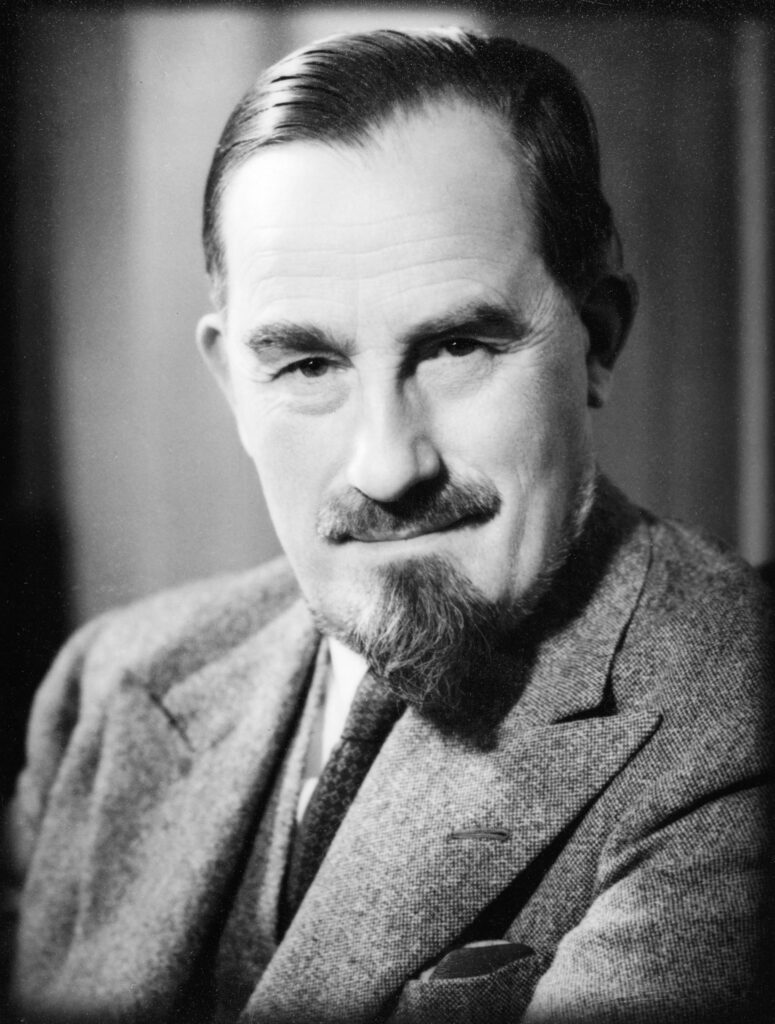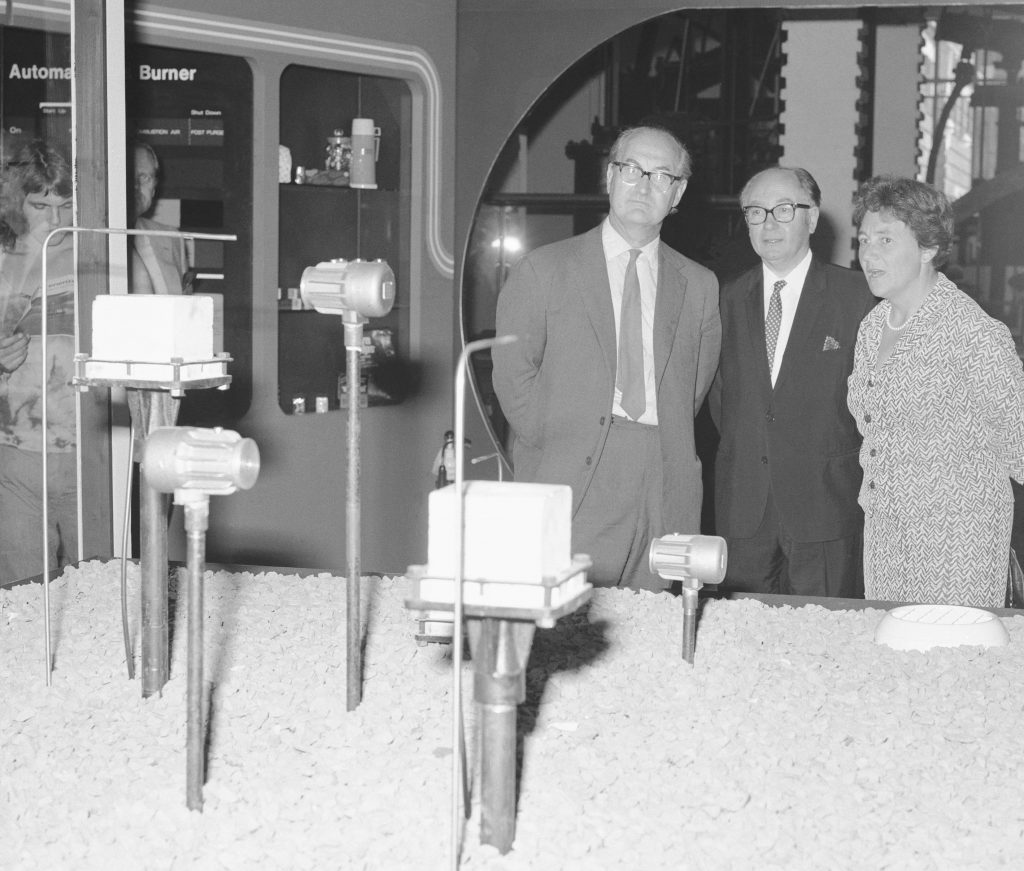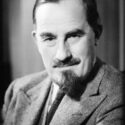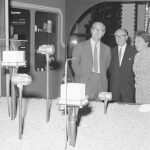Obituary: Frank Greenaway
Obituary: Frank Greenaway
https://dx.doi.org/10.15180/140111/003Frank Greenaway, who died at the age of 95 in June 2013, was a Keeper and manager at the Science Museum from the early post-war years to the era of Margaret Thatcher. He stamped his own character on the Museum and was a significant historian of chemistry and of science more broadly. These achievements have been captured in other obituaries and in Chymica Acta, a combined autobiography and festschrift published on his 90th birthday in 2007. However, this article will focus on the continuity he provided in the Museum’s history, a further accomplishment that has yet to be fully appreciated. Greenaway was the most distinguished scholar at the Science Museum for many years, keeping alive the embers, and occasionally the flames, of research single-handedly.
Greenaway (as he was known in the style of the times) was born in Cardiff in 1917. He studied chemistry at Jesus College, Oxford, before serving in the Second World War as a bomb disposal officer. After teaching chemistry in Bournemouth and at Epsom Grammar School, he worked at Kodak in Harrow.
Greenaway joined the Science Museum as an Assistant Keeper in 1949 and became a Deputy Keeper ten years later. The Museum was still a young institution, for it had only acquired its independence in 1909 and, in contrast to the great art museums, the interpretation of the past in the Museum at the time was closely linked to the display of contemporary scientific and industrial practice. The collections acquired over the previous century by the Science Museum and its predecessors did include historic artefacts, although storage facilities were still limited. Above all, a significant collection reflecting Britain’s great engineering heritage, partly a legacy of the earlier Patent Office Museum, linked the exhibits of the East Hall to the Industrial Revolution.
When Greenaway arrived, chemistry at the Science Museum was the responsibility of the Imperial College-educated chemist Alexander Barclay, who had joined the Museum in the aftermath of the Great War in 1921. Barclay was an active collector and had built up the presentation of his subject for the opening of the building in 1928. His great interest was photography, but his publications were limited to catalogues of his collections.
In 1950, soon after Greenaway started work, another Oxford-educated chemist became the Museum’s Director. A veteran of the First World War, with a brother who lost his health and ultimately his life to gas warfare, Sherwood Taylor had been part of the move after 1918 to prove that science was humanistic (see Figure 1). In 1931 he had made the then unusual step of formally studying the history of science, taking a PhD on the alchemy of the ancient Greeks in Britain’s first History of Science department under Charles Singer at University College London (UCL). Four years later he was one of the three founders of the Society for the History of Alchemy and Early Chemistry and took the role of editing its journal, Ambix. He taught chemistry in schools and at Queen Mary College (where his own mentor the chemist and historian JRR Partington taught) and was briefly a full-time writer, becoming in 1940 the Curator of the Museum of the History of Science at Oxford, which had also been founded as part of the humanistic interpretation of science after the First World War. Sherwood Taylor thus brought to the Science Museum two decades of experience as a scholar and curator, which would strongly influence the novice curator Frank Greenaway (Simcock, 1987).

Within a short time of his appointment at the Science Museum, Sherwood Taylor was in conflict with his most senior curatorial staff. Unlike them he was interested in the place of science in culture, in alchemy and in religion. His enthusiasm for the popularisation of science and technology was evidenced by his acquisition of Coalbrookdale by Night, a painting which was a technically incorrect yet culturally important representation of the industrial revolution. Overwhelmed by administrative work and feeling isolated, Sherwood Taylor soon became unwell. Nonetheless, he proved a powerful influence on Greenaway who served as his assistant in his historical work. For example (as he indicated in his Oxford Dictionary of National Biography article on Sherwood Taylor), Greenaway completed the older man’s history of industrial chemistry and saw it through to press after he died at the beginning of 1956. As Director, Sherwood Taylor had a short tenure, but through Greenaway his interest in history and early chemistry, and his broad humanistic perspective, was maintained.
Greenaway was encouraged by Sherwood Taylor to pursue the history of chemistry, and took the MSc in the history of science at UCL where Taylor himself had studied. This further inspired Greenaway’s interest in early modern chemical techniques. In Chymica Acta he recalled the impact of the “Scientific Change” conference held in Oxford in 1961. That meeting brought him into contact with the new professional discipline of the history of science that was only just emerging, and in which British historians were leaders within Europe. He met for instance the encyclopaedic, and already very senior, historian of Chinese science and embryologist, Joseph Needham. Not himself a prolific publisher, Greenaway later described (in Chymica Acta) how he served the new discipline of history of science through his role on committees, the editing of reports and journals and international travels. Never before had there been a curator at the Science Museum with his wealth of international contacts and interests, which helped to establish the Museum at a global level. At the same time Greenaway was securely British, happy to be a member of the Athenaeum Club, and with a sense of the appropriate use of language that was part of the Museum’s civil service tradition. When one of the present authors, then newly appointed, annotated a minute with the comment “OK”, the reprimand “Yes” or “No”, not “OK” followed immediately.
As well as working and networking, Greenaway did contribute himself to the growing literature on history of science and earned his place in academic circles. In addition to early chemistry instrumentation such as blowpipes, he was particularly fascinated by the great Manchester chemist John Dalton. In 1958, he published a contribution on Dalton to the Memoirs of the Manchester Literary and Philosophical Society that was converted into a book in 1966 and, with the support of his teacher at UCL, a range of his work on Dalton was accepted as a thesis for a PhD in history of science in 1971 (Greenaway, 1971).
Greenaway was the first Reader of the History of Science at the Royal Institution (RI) between 1970 and 1985. There, he sponsored a seminar series that would be the basis for the history of science seminar series subsequently organised at the Science Museum. Even beyond the RI he was an ambassador for the history of science – for instance, in the mid-1970s he encouraged Peter Morris, a co-author here but then a beginning chemistry student. After his retirement, Greenaway continued to work at the Science Museum as a Research Fellow until 1991 and published a commissioned work The History of the International Council of Scientific Unions five years later (Greenaway, 1996).
Greenaway was not only an enthusiastic promoter of scholarship; he was also a discoverer of excellent people and he and his staff had a significant impact on the Museum floor. In the 1970s, having been promoted to Keeper of Chemistry in 1967, he recruited a remarkable team. Anne Newmark was initially a Research Assistant with special responsibility for biochemistry, whilst Derek Robinson, responsible for industrial chemistry and the gas industry, and Robert Anderson, in charge of pure chemistry, were appointed as Assistant Keepers. Together they renovated the huge chemistry galleries at the front end of the building that Greenaway had constructed in 1963 -64, the entire exhibition area being honoured with a royal opening on the occasion of the centenary of the Royal Institute of Chemistry in 1977. Beyond chemistry, Greenaway also initiated the process of acquiring for the Science Museum a huge collection of medically related artefacts from the Wellcome Trust, a collection that roughly doubled the museum’s entire existing collection (see Figure 2).

Greenaway also encouraged his protégés to build on his interest in the history of science as a discipline. Robert Anderson, later Director of the National Museums of Scotland and of the British Museum, had already distinguished himself in his previous job at the Royal Scottish Museum with a catalogue of the collection of the great 18th century chemist James Black. At the Science Museum he followed Greenaway’s lead in extending research within the history of science. Thus, at the British Society for the History of Science he too presented in the same session as Joseph Needham and he too became a leader in the history and appreciation of scientific instruments. In 1978, Greenaway also recruited Robert Bud (a co-author here) as Assistant Keeper of Industrial Chemistry, the Museum’s first already-trained historian of science, who was completing a PhD at the University of Pennsylvania.
Robert Anderson and then current curators Robert Bud, Peter Morris and Tim Boon built on several of the traditions that Greenaway established in promoting historical research at the Science Museum, successively carrying the torch that Greenaway himself had inherited from Sherwood Taylor towards the end of the Science Museum’s first half-century. That tradition is still bearing new fruit with the recent creation of the Research and Public History department and the imminent opening of a new Research Centre, in 2015.



